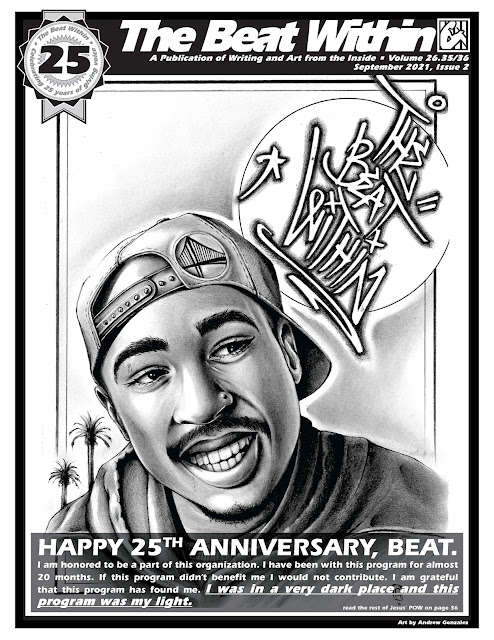The Beat Within Since 1996
Thankful to have the opportunity to reconnect with a program and publication that had the kind of impact on my trajectory towards being a part of education as a teacher. In the early 2000s, as I thought about what I would focus on after being selected for the Robert E. McNair Program at NMSU, I noticed a copy of The Beat Within amongst the scattered chaos of my undergrad studies on the living room floor. I had to meet a deadline for what I wanted to focus on when it came to continuing my education in the criminal justice field. That copy on the floor of The Beat Within magazine was the answer to what would matter most to me as a student of Hip Hop and a person that wanted to support and create platforms that allowed for more voices to be heard. At the time, I wasn't aware of how education would work it's way into what I wanted to do with my life. In my experience growing up in public education, during the formative years of my elementary and secondary life, what I wanted to be was far removed from ever working in a school. Looking back, it would take a bit more growing up and connections with teachers like Susie Castro Clark from high school and my 2nd grade teacher Mrs. Barkley for me to realize the kind of impact educators can have on students that aren't quite sure where they're headed. Over the years I'd see how the value of education didn't start or stop with a school building, but existed in those that raised us, the peers we connected with, and the experiences we attached ourselves to. When I started visiting youth at a local juvenile detention center, it was the young people there that helped me see how I could start to fulfill the responsibilities of an educator, a teacher, and a guide towards creative expression. The youth of Voices Behind Walls helped me see how in our own world out here in the Southwest, we could do our thing too and connect with our creative power to rhyme, write, and share our thoughts and stories. I'm honored to continue to have that chance to think about this experience through the pages of The Beat Within.
In the 25th Anniversary issue, I got the chance to share a reflective piece titled Tupac Shakur & The Beat Within Legacy. The writing focuses on Tupac's mother, Afeni Shakur and a text she helped usher into the public's hands titled Tupac Shakur Legacy. Shout out to The Beat Within founder, David Inocencio, for the chance to share a space in The Beat Within publication for a monthly column I titled VBehindWColumn. I encourage everyone to please support The Beat Within. Spread the word about this publication and encourage your local juvenile justice systems to make the publication available to their youth and reach out to The Beat on ways that youth can share their stories and learn from the stories of others in this magazine. Online you'll find The Beat at: thebeatwithin.org and please see the Subscription info thebeatwithin.org/subscription.
Here's to the next 25 years.
check.
Mr. Lee
check.
Mr. Lee









